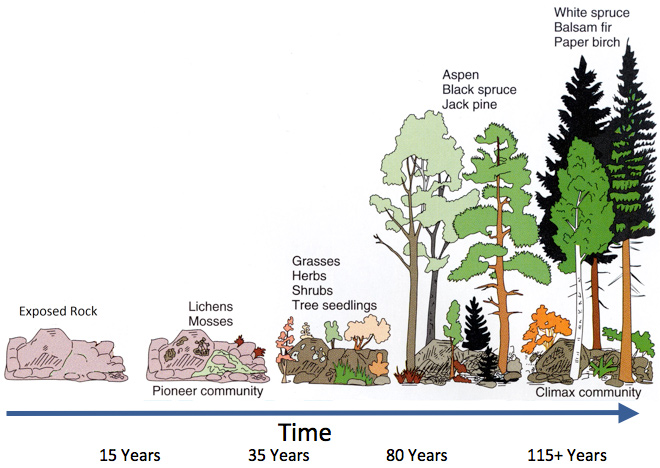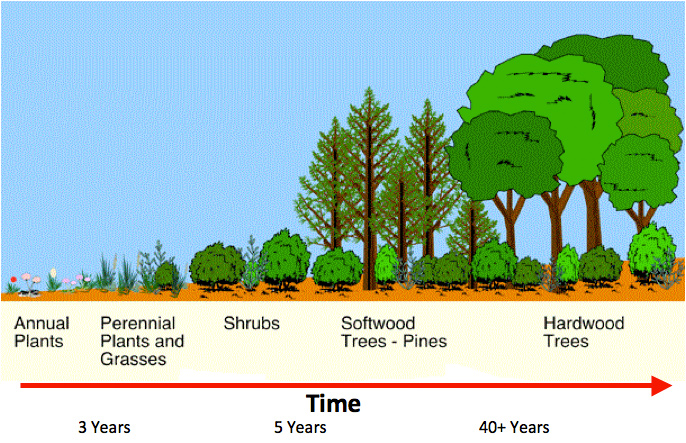There are two types of ecological succession, primary and secondary.
![]() Watch this video for a brief introduction to the two types of succession.
Watch this video for a brief introduction to the two types of succession.
Source: Mark Drollinger, YouTube
This type of succession involves changing an area from one lacking any life forms (no plants, animals, or soil) to one that includes a great diversity of plants, animals, and insects. The most important aspect of this type of succession is that it starts without soil. This means that there could have been a previous community, but if some kind of disturbance such as a volcanic eruption or glacial retreat removes only the mineral substrate (a.k.a. bare rock), then that would be an example of primary succession.
Succession can occur in all ecosystems. The evolution of a body of water from a lake to a marsh to a meadow or forest can last for thousands of years. The process cannot be observed directly.
 Source: Adapted from Natural Succession, University of Wisconsin
Source: Adapted from Natural Succession, University of Wisconsin Secondary Succession
Secondary succession occurs when there has been a disturbance to an existing community that removes or damages the vegetation, but does not remove the existing soil. The pioneer species in secondary succession start with roots or seeds that remain after the disturbance. This type of succession occurs faster than primary succession. Secondary succession follows disasters such as a wildfire, hurricane, or other natural disturbance. Secondary succession can also follow human activities like logging and farming.
 Source: Adapted from Succession, Physical Geography
Source: Adapted from Succession, Physical Geography